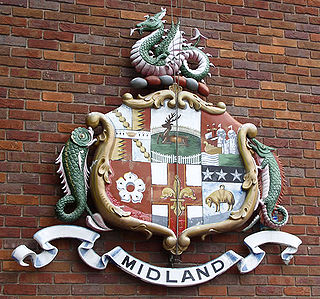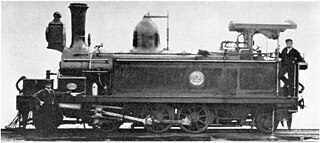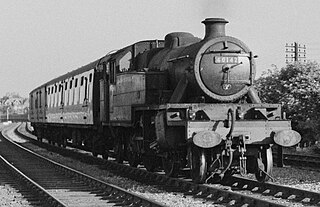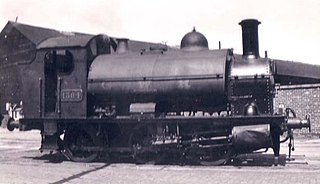
The Locomotives of the Midland Railway, followed its small engine policy. The policy was later adopted by the London, Midland and Scottish Railway, and contrasted with the London and North Western Railway's policy. The small engine policy was partly the consequence of a difference in the background of senior managers. In most railway companies, the elite position was the design, construction and maintenance of locomotives. Bigger engines brought more prestige and allowed longer trains. In the Midland, the marketing department was paramount. They recognised that people wanted more frequent, shorter trains rather than an infrequent service. It concentrated on very light, very fast and frequent trains.
The London, Midland and Scottish Railway had the largest stock of steam locomotives of any of the 'Big Four' Grouping, i.e. pre-Nationalisation railway companies in the UK. Despite early troubles arising from factions within the new company, the LMS went on to build some very successful designs; many lasted until the end of steam traction on British Railways in 1968. For an explanation of numbering and classification, see British Rail locomotive and multiple unit numbering and classification.

Under the Whyte notation for the classification of steam locomotives, 2-6-2 represents the wheel arrangement of two leading wheels, six coupled driving wheels and two trailing wheels. This arrangement is commonly called a Prairie.

The London, Midland and Scottish Railway (LMS) Fairburn Tank 2-6-4T is a class of steam locomotive. They were designed by Charles E. Fairburn for the LMS. 277 of these locomotives were built between 1945 and 1951, numbered in the range 42050–42186, (4)2187–(4)2299, (4)2673–(4)2699.
The Great Western Railway purchased two diesel shunters, and ordered a further seven immediately prior to Nationalisation, which were delivered to British Rail in 1948–49. The two shunters used by the GWR were numbered 1 and 2, while a series commencing at 501 was planned for the new locomotives ordered in the 1940s. British Rail renumbered both its inherited and new locomotives in a series commencing from 15100.

The London, Midland and Scottish Railway (LMS) Hughes Crab or Horwich Mogul is a class of mixed-traffic 2-6-0 steam locomotive built between 1926 and 1932. They are noted for their appearance with large steeply-angled cylinders to accommodate a restricted loading gauge.

The Stanier Class 3P 2-6-2T was a class of London, Midland and Scottish Railway (LMS) steam locomotive. They were designed by William Stanier based on the earlier LMS Fowler 2-6-2T.

The London, Midland and Scottish Railway (LMS) Fowler 2-6-4T was a class of steam locomotive passenger tank engine designed by Henry Fowler.

The 1361 Class were small 0-6-0ST steam locomotives built by the Great Western Railway at their Swindon Works, England, mainly for shunting in docks and other sidings where track curvature was too tight for large locomotives.

The London, Midland and Scottish Railway (LMS) Fowler 3F0-6-0T is a class of steam locomotives, often known as Jinty. They represent the ultimate development of the Midland Railway's six-coupled tank engines. They could reach speeds of up to 60 mph (97 km/h).

The LMS Stanier Class 4P 3-Cylinder 2-6-4T is a class of steam locomotives designed for work over the London, Tilbury and Southend Railway route. All 37 were built in 1934 at Derby Works and were numbered 2500–2536. The third cylinder was provided to allow increased acceleration between the many stops on the L.T.&S.R. line. From 1935 the LMS switched to constructing a very similar, albeit simpler, 2-cylinder design.

W. G. Bagnall was a locomotive manufacturer from Stafford, England which was founded in 1875 and operated until it was taken over in 1962 by English Electric.

The SR USA class are some ex-United States Army Transportation Corps S100 Class steam locomotives purchased and adapted by the Southern Railway (SR) after the end of the Second World War to replace the LSWR B4 class then working in Southampton Docks. SR staff nicknamed them "Yank Tanks".

The NCC Class WT is a class of 2-6-4T steam locomotives built by the Northern Counties Committee's parent company, the London, Midland and Scottish Railway for service in Northern Ireland.
The LMS Northern Counties Committee (NCC) Class Y was a class of 0-6-0T steam locomotives formed when two LMS Fowler Class 3F engines were regauged from 4 ft 8+1⁄2 instandard gauge to the 5 ft 3 in Irish broad gauge in 1944 becoming NCC Nos.18 and 19.
The Belfast and Northern Counties Railway (BNCR) Class N was a class of 0-4-0ST dock engines that worked on the Belfast Harbour Commissioners' lines in north-east Ireland. No.42 was the first of the class and was built by Sharp, Stewart and Company in 1874. A second, similar engine, No.16, was built by the MR (NCC) in 1914.

The Lancashire and Yorkshire Railway Class 32 was a small class of 0-8-2T steam locomotives, intended for heavy shunting and banking duties.

The L&YR Class 24 was a class of short-wheelbase 0-6-0T steam locomotives of the Lancashire and Yorkshire Railway (L&YR). It was designed by Aspinall and introduced in 1897 for shunting duties. Twenty locomotives were built, but six were withdrawn between 1917 and 1922.
The Caledonian Railway 55 Class were 4-6-0 mixed-traffic locomotives designed by John F. McIntosh and built at the railway’s St. Rollox works in Glasgow in 1902-1905. The class was intended for use on the Callander and Oban line and were sometimes known as Oban Bogies, a nickname they shared with the earlier Brittain 179 Class 4-4-0s and the subsequent Pickersgill 191 Class 4-6-0s, all of which were built for use on the same route.














